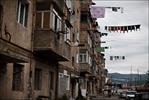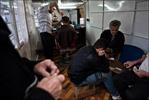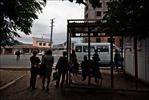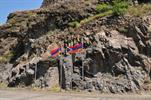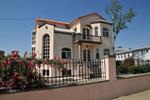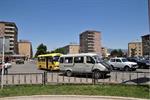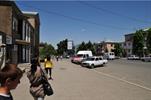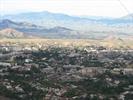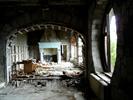Formerly Khankendi, the capital of Nagorno Karabagh (population 40,000) was renamed Stepanakert in 1923 in honour of the Armenian Bolshevik Stepan Shahumian (1878-1918) after whom Stepanavan is also named. His statue stands in Shahumian Square at the northern end of Vazgen Sargsian Street, one of the main shopping streets. Newly independent Azerbaijan renamed it back to Khankendi in 1992, but the name in use within Nagorno Karabagh today remains Stepanakert.
Xankendi (Stepanakert), although not exactly a major holiday destination, has most things you'd expect to find for a place of 50,000+. The town suffered considerable damage in the war but this has now been repaired and the town centre begins to have the feel and appearance of a capital city, albeit a small one. The town is clean and there are many notices saying 'Do not litter'. The new parliament building on Veratsnound (Renaissance) Square is topped by a transparent cupola reminiscent of Armenian church architecture. Until recently Stepanakert had no churches but a new cathedral - The Astvatsatsin (Mother of God) Church of the hanging-dome type was recently constructed.
Artsakh State Museum (J Sasounti Davit St; 09.00-17.00 Mon-Sat), is just up the hill from the market. It gives an interesting portrayal of Nagorno Karabagh from prehistoric times to the present day. The Soviet era is not totally ducked as sometimes happens but, World War II apart, the focus was on the positive side (industrialisation) rather than the negative (the purges). The two sides in the days of the First Armenian Republic, the Bolsheviks and the Dashnaks, are given complementary displays opposite each other. The Karabagh War Museum, or Museum of Fallen Soldiers (25 Vazgen Sargsian St; 47 950738), depicts the 1990-94 war with displays of weaponry and portraits of soldiers killed during the war.
On the north side of Stepanakert is a statue reproduced in a thousand Karabagh souvenirs. The creation of the sculptor Sargis Baghdasarian in Soviet times, it is called We Are Our Mountains. Looking like an elderly couple with peaked skulls, the statue is intended to symbolise the unity of the Karabagh people with their mountains. It is universally referred to as Mamikyel Babik (Granny and Grandad).
If you're planning a trip to Azerbaijan you may be interested ▶ Azerbaijan highlights - For those who prefer to go unbeaten path, to explore less visited places and check national charisma of this small country in Southern Caucasus on the edge of Europe.



